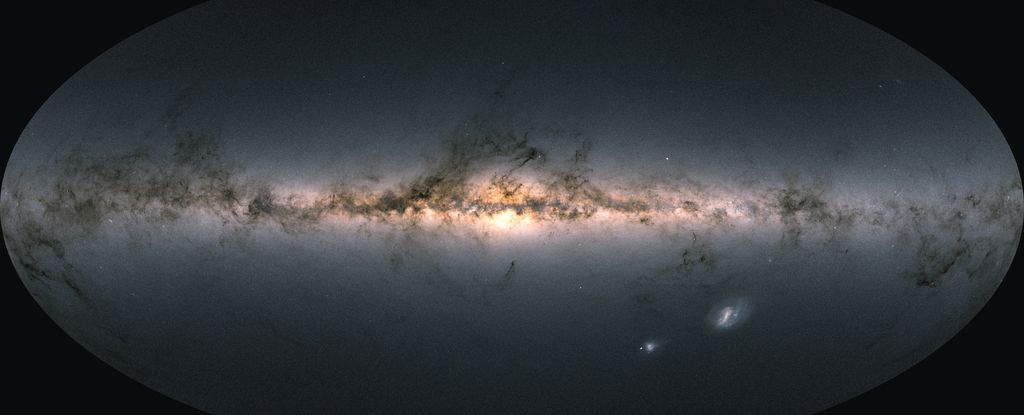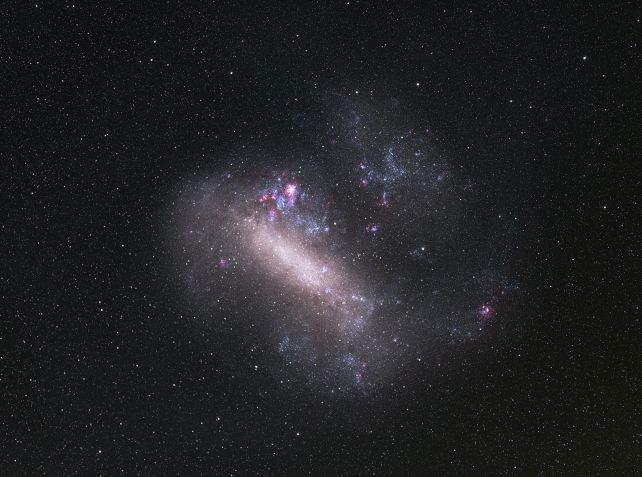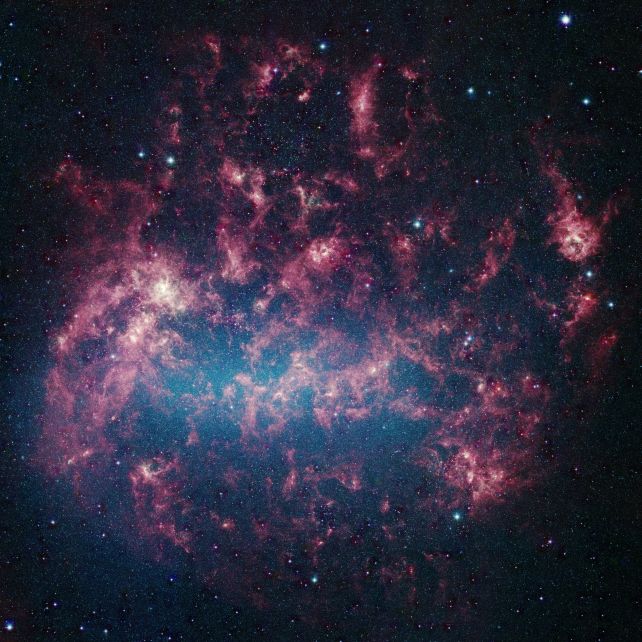
Our Milky Way galaxy may be on a collision course with a supermassive black hole, and the evidence suggests that this encounter might be closer than we previously imagined.
Deep within the Large Magellanic Cloud, a dwarf galaxy orbiting the Milky Way in a tightening spiral, researchers have discovered indications of a colossal hidden object estimated to have around 600,000 times the mass of our Sun.
Since the Large Magellanic Cloud is poised to collide with our galaxy in the future, this hidden black hole is also likely to join the fray.
What’s particularly intriguing is that this black hole exists within a mass range that’s quite uncommon—below one million solar masses. Confirming its existence could provide valuable insights into how black holes evolve from stellar-sized masses to significantly larger giants, including those with billions of solar masses.
This groundbreaking discovery was led by astrophysicist Jiwon Jesse Han from the Harvard & Smithsonian Center for Astrophysics (CfA). The research has been submitted to The Astrophysical Journal and is currently accessible on the preprint server arXiv.
Detecting black holes can be quite challenging. Unless they are actively consuming matter—which causes intense illumination due to the heat generated by friction—they remain undetectable as they emit no discernible radiation.
To uncover them, scientists employ clever techniques, one of which involves observing stars exhibiting unexpected motion patterns that can only be explained by the presence of a black hole.

The primary strategy for detection involves monitoring unusual stellar orbits. For example, astronomers confirmed the existence and size of Sagittarius A*, the supermassive black hole at the Milky Way’s center, by closely examining orbital dynamics (which is approximately 4.3 million solar masses, for reference).
However, Han and his team took a different approach and focused on hypervelocity stars—anomalous celestial bodies that travel much faster than typical stars within their galaxy, so rapidly that they could potentially escape into intergalactic space.
Many of these fast-moving stars are traversing the galactic halo, their ultimate destination uncertain.
The acceleration of these stars led researchers to propose a connection to hidden black holes. This acceleration phenomenon, known as the Hills mechanism, occurs through a gravitational interaction involving a black hole and two stars, culminating in one star being ejected at extreme speeds.
The recently retired Gaia space telescope meticulously mapped the Milky Way’s constituents, including their positions in three-dimensional space—an intricate task—as well as their velocities and movements.
Using data from Gaia, the researchers reanalyzed 21 hypervelocity stars residing in the galaxy’s outer halo, consistent with the Hills mechanism. These stars belong to the B subtype, characterized by their massive size and high temperatures, indicating that their thrilling journeys through space have occurred over relatively short periods.
The analysis involved tracing the stars’ velocities and movements back to their origins, carefully excluding other possible acceleration explanations. They successfully identified the origins of 16 stars, noting that seven originated near Sgr A* in the center of the Milky Way.
However, the remaining nine stars are believed to have originated from the Large Magellanic Cloud, implying an expulsion related to the Hills Mechanism from an invisible object weighing approximately 600,000 solar masses—a potential hidden black hole within.

The Large Magellanic Cloud is currently about 160,000 light-years away from the Milky Way. Its gradual approach is complex, and recent estimates suggest that a collision may occur in approximately 2 billion years.
As the two galaxies merge, should the black hole within the Large Magellanic Cloud exist, it will eventually make its way to the galactic center and merge with Sgr A*, resulting in an even larger black hole over countless ages.
Astronomers propose that this process could illustrate how smaller black holes expand to gigantic sizes. Watching this slow evolution unfold within our own galaxy would be remarkable—even if we won’t witness the grand finale ourselves.
The research team hopes that future studies will help confirm the existence and analyze the characteristics of this intriguing new black hole discovery.
The study has been submitted to The Astrophysical Journal and is available on arXiv.









